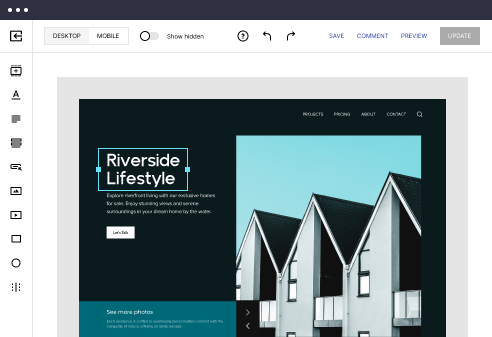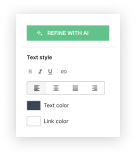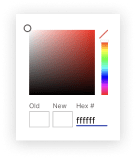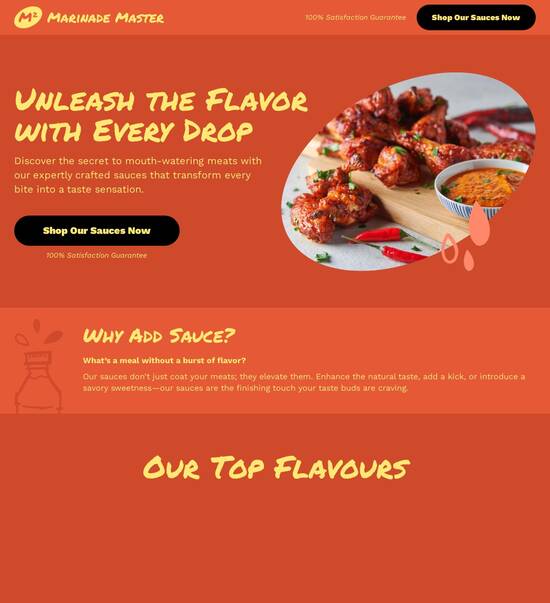
Web page template for ASP.NET developers
Use TemplateAbout template
Attract clients and showcase your skills with style using our landing page templates for ASP.NET developers. Let's convert those visitors into clients!
Recommended templates
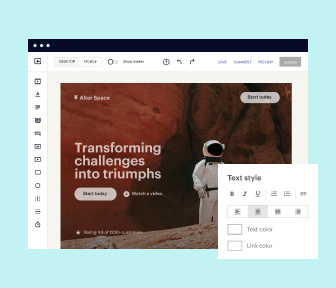
Easy to build without coding
With the intuitive drag-and-drop builder, anyone on your team can create high-converting pages without any knowledge of code or design. Make enhancements to your landing page with custom widgets using Javascript, HTML/CSS, or third-party scripts.
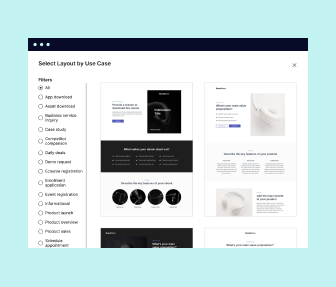
Multiple layouts for any industry and goal
Select from 500+ landing page layouts built to boost conversions across industry-specific scenarios. Customize them by adjusting fonts, adding images, and generating on-brand content with the AI assistant. Quickly scale with Instablocks® and Global Blocks that you can save, reuse, and update globally.
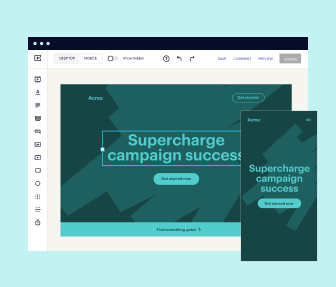
Loads fast and looks polished on any device
Every template is responsive, which means they present professionally on any device and load blazingly fast with our Thor Render Engine. You can also power them up with Google AMP technology to deliver an unparalleled mobile experience and drive higher conversions.
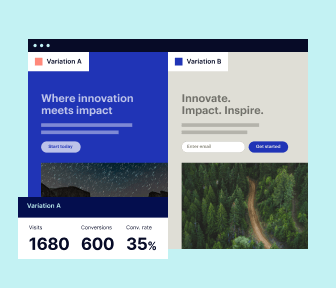
Robust analytics & experimentation
Get real-time updates and reporting across all your devices, showing the number of visitors, conversions, cost-per-visitor, and cost-per-lead. Launch AI-powered experiments, run A/B tests, and use heatmaps to analyze user behavior, then optimize your landing page to maximize conversions.

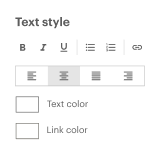
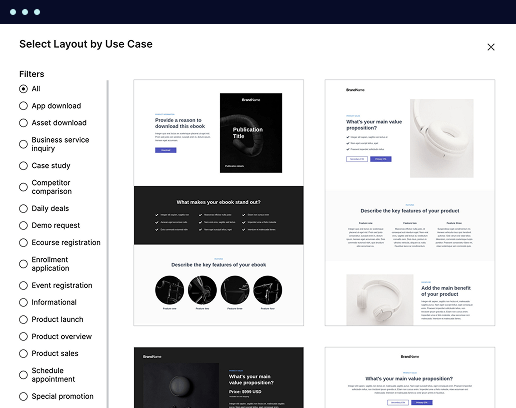
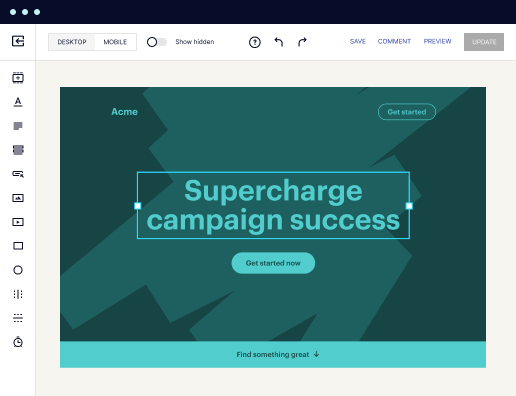

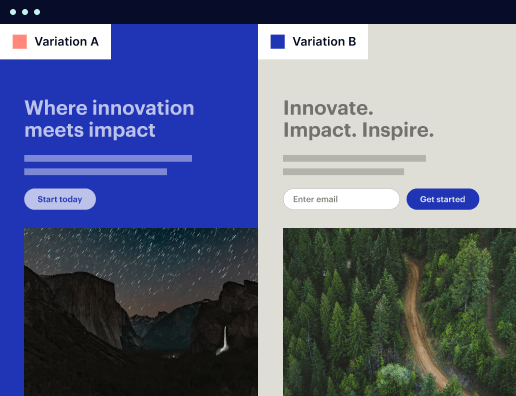

Easy to build without coding
With the intuitive drag-and-drop builder, anyone on your team can create high-converting pages without any knowledge of code or design. Make enhancements to your landing page with custom widgets using Javascript, HTML/CSS, or third-party scripts.
Multiple layouts for any industry and goal
Select from 500+ landing page layouts built to boost conversions across industry-specific scenarios. Customize them by adjusting fonts, adding images, and generating on-brand content with the AI assistant. Quickly scale with Instablocks® and Global Blocks that you can save, reuse, and update globally.
Loads fast and looks polished on any device
Every template is responsive, which means they present professionally on any device and load blazingly fast with our Thor Render Engine.
Robust analytics & experimentation
Get real-time updates and reporting across all your devices, showing the number of visitors, conversions, cost-per-visitor, and cost-per-lead. Launch AI-powered experiments, run A/B tests, and use heatmaps to analyze user behavior, then optimize your landing page to maximize conversions.
All the features you need to build asp net templates free download with source code
Explore more featuresLearn how to build free asp net website templates
Frequently asked questions about aspx net website templates
Leading the way in building high-performing landing pages





Free template download for asp net website: Your ultimate how-to guide
Creating high-converting landing pages is essential for maximizing ROI on digital marketing campaigns. With Instapage, marketers in sectors like business services, tech, and education can harness the full potential of their landing page efforts through a user-friendly and powerful platform.
Understanding the importance of landing pages
Landing pages are specifically designed to guide visitors toward a single action, often followed by a call-to-action (CTA) that leads to conversions. Instapage helps marketers create these pages swiftly using its library of over 100 conversion-focused templates, ensuring tailored experiences without needing coding expertise.
- High Conversion Rates: Instapage's optimized layouts significantly boost conversion rates, with features designed around user experience.
- Time Efficiency: Quick deployment of landing pages allows marketers to focus on strategy rather than development.
- Customization: Tailor your landing pages to resonate with your unique audience through dynamic text replacement and personalized content.
Creating your landing pages with Instapage
To get started, follow these steps:
- Select a template: Choose from 100+ customizable templates that suit your campaign's needs.
- Use the intuitive builder: Drag and drop elements to design your page effortlessly, incorporating lead-gen elements.
- Publish and promote: Once satisfied with the design, launch your page and start your marketing push.
Optimizing landing page performance
After launching your landing page, it’s crucial to optimize for performance. Utilize Instapage's built-in tools:
- A/B Testing: Conduct experiments to determine which elements yield higher conversion rates by comparing different versions of your page.
- Heatmaps: Monitor user behavior to see where visitors are clicking and interact most with your content.
- Analytics Dashboard: Gain insights into your page's performance metrics to make data-driven adjustments.
Leveraging these optimization tools ensures your marketing strategy stays agile and effective.
In conclusion, making the most of your landing pages is vital in today's competitive digital landscape. Instapage provides marketers with robust features that foster creativity, efficiency, and optimization.
Ready to accelerate your digital marketing campaigns? Sign up for Instapage today and empower your marketing team with the tools they need to succeed.
People also ask about free download template for website in asp net
Web page template for ASP.NET developers
Understanding the landscape of web page templates for ASP.NET developers
For ASP.NET developers, web page templates are pivotal in creating efficient, aesthetically pleasing, and functional applications. Understanding how templates evolved can significantly influence their use and effectiveness in modern development environments.
The evolution of web page templates
Historical context plays a vital role in comprehending the need for sophisticated web page templates. Initially, websites were static, meaning developers created fixed content pages, making updates cumbersome and time-consuming. Over the years, advances in technology allowed for dynamic content delivery, revolutionizing web development. As users began to expect interactive and user-friendly experiences, templates transitioned into more dynamic frameworks, making it essential for ASP.NET developers to leverage their functionalities.
Modern imperatives have led ASP.NET developers to seek more sophisticated templates that support diverse functionalities. The rise of mobile browsing necessitates responsive designs, enabling applications to adapt seamlessly to various screen sizes. Additionally, the growing demand for faster development cycles emphasizes the need for reusable templates that streamline coding processes while ensuring high-quality outcomes.
Key features of web page templates in ASP.NET
When developing an application, certain key features in web page templates can elevate the entire project. First on the list is responsiveness and adaptability. With mobile-first design considerations, templates must allow for a smooth experience across devices. Additionally, cross-browser compatibility is crucial, as users access web applications from various platforms.
Mobile-first design considerations ensure that templates render appropriately on mobile devices, prioritizing user experience.
Cross-browser compatibility essentials guarantee that the application works flawlessly across different web browsers.
Customizability is another significant feature, highlighting the ability to tailor templates according to specific client needs. Templates should offer simple customization options for color schemes, typography, and component placements, allowing developers to create unique applications. Scalability is also vital, particularly for handling projects of various sizes efficiently; both small and large scale applications can benefit from the use of templates that facilitate growth without compromising quality.
Finally, integration capabilities are essential for ensuring smooth interactions with other tools and libraries. Many ASP.NET developers rely on third-party libraries such as Entity Framework for data management and Bootstrap for responsive design, which emphasizes the need for templates capable of integrating seamlessly with such systems.
Evaluating template collections
When selecting a web page template, it is crucial to consider the diversity of options available. Different categories of templates cater to varied requirements, ensuring the right choice for specific projects. For instance, portfolio templates work well for creative showcases, while e-commerce templates are optimized for sales-driven projects.
Portfolio templates allow creatives to display their work in an aesthetically pleasing manner.
E-commerce templates enable businesses to create an engaging environment for online sales.
Corporate templates project a professional image for businesses seeking to establish an online presence.
The role of market trends plays a significant part in the relevance of templates as well. Keeping templates aligned with user demands is essential; shifts in user preferences can quickly make a template feel outdated if not periodically revisited and refreshed. Developers must remain aware of emerging trends to ensure that the templates they select or create resonate with current market aesthetics and functionalities.
Exploring template performance metrics
Performance metrics are crucial in evaluating the quality of web page templates. Load times should be a primary concern; fast-loading templates enhance user experience and significantly decrease bounce rates. Techniques for assessing and improving performance may include optimizing images, reducing server response times, and implementing lazy loading to delay loading images until they are needed.
Another critical aspect is ensuring that templates are SEO-friendly. This includes optimizing the necessary components such as schema markup and meta tags, which enhance visibility on search engines, directly affecting traffic and conversions. When selecting a template, ASP.NET developers should prioritize features that support SEO best practices to keep their projects competitive.
User experience (UX) is yet another vital consideration when choosing templates. Integration of essential UX elements—such as intuitive navigation and accessibility options—is imperative for ensuring users engage with the application favorably. A template that aligns well with user needs will result in better retention, satisfaction, and conversion rates.
Managing projects efficiently with templates
Organizational structure is vital for efficient project management, particularly when utilizing web page templates. Implementing a well-defined folder structure enhances file management and significantly streamlines development processes. By organizing templates logically, developers can save time navigating through resources and facilitate easier updates or adjustments.
Proper folder organization allows for efficient retrieval of template files, improving overall productivity.
Utilizing consistent naming conventions helps developers identify files and understand their purposes at a glance.
Version control is also necessary for maintaining template integrity across project iterations. Tools like Git provide functionality for tracking changes, facilitating collaboration, and reverting to previous versions if issues arise. With a systematic approach, developers can ensure that their templates remain functional and relevant as the project evolves and additional features are introduced.
Collaboration tools play a vital role in team productivity, making communication and feedback seamless. Utilizing platforms that allow real-time edits and instant feedback can significantly reduce the time it takes to finalize templates, encouraging a more cohesive development environment.
Leveraging backend interfaces for enhanced functionality
Dynamic content generation techniques empower developers to populate templates with data from backend systems effortlessly. By using APIs to pull data into templates, ASP.NET developers can create applications that react to user inputs and interactions in real-time, offering a more engaging experience.
Exploring template engines in ASP.NET reveals several popular options, with Razor being a top choice amongst developers for its clean syntax and robust capabilities. The ASPX engine is another option that supports traditional ASP.NET applications. Understanding how these engines operate can greatly enhance a developer’s ability to create effective templates.
Data binding is crucial as well, allowing developers to efficiently connect backend data to UI components. This facilitates a more cohesive relationship between the front end and the back end, handling dynamic user data smoothly to create responsive applications.
Crafting a cohesive dashboard experience
Integrating dashboards into web page templates is essential for many applications that require real-time data representation. Dashboards not only present data visually but also allow users to interact with various metrics, gaining insights that drive decision-making. Common dashboard tools for ASP.NET include libraries like Chart.js and D3.js, which enhance visual data representation through engaging charts and graphs.
Design principles for effective dashboards focus on clarity and simplicity. When creating a dashboard, developers should prioritize actionable data presentation, allowing users to glean insights quickly. A well-structured dashboard fosters better engagement, inviting users to explore trends and spot anomalies easily.
User interaction is another critical aspect of dynamic dashboards. Developers can significantly enhance user engagement by implementing interactive elements that encourage exploration of data. Features like filtering options, drill-downs, and customizable views facilitate richer user experiences, making it crucial to incorporate such elements into template design.
Best practices for using web page templates
Choosing the right web page template involves careful consideration of several factors. Template selection criteria should include responsiveness, customizability, and performance metrics, ensuring a wise investment for the project at hand. Taking the time to evaluate these features can yield long-term benefits and improved user experiences.
Ensure templates are responsive across devices, eliminating the need to create separate designs.
Seek templates that offer extensive customization options to tailor the design easily.
Evaluate performance metrics to ensure templates meet users’ expectations for speed and efficiency.
Customization do's and don’ts are essential knowledge when working with templates. Developers should maintain the core functionalities of the template while adjusting aspects such as color schemes or typography to align with branding. Understanding which elements are crucial to the template's performance will help prevent unnecessary complications.
Documentation and support are vital components for ongoing success. Developers should always seek templates that come with comprehensive documentation and accessible support channels, ensuring continuous learning and troubleshooting assistance when needed.
The future of web page templates in ASP.NET
Emerging technologies are set to influence web page template development significantly. Innovations, especially in AI and machine learning, promise to reshape how developers approach template design and functionality. As these technologies advance, the potential for automation in template customization and performance optimization becomes increasingly feasible.
Predictive trends also indicate shifts in user behavior and design preferences. As users demand enhanced personalization, developers must adapt by creating templates that allow for tailored experiences based on user interactions. The anticipation of user-centered design will only continue to grow, necessitating a proactive approach from ASP.NET developers.
Case studies: Successful ASP.NET projects using templates
Real-world examples showcase the benefits of utilizing templates in ASP.NET projects. A notable example includes an e-commerce application that leveraged responsive templates, resulting in a 20% increase in conversion rates. The developers effectively utilized customization options to align the website’s design with the brand, enhancing user experience and satisfaction.
Lessons learned from these projects emphasize the significance of selecting templates that not only meet aesthetic needs but also support functionality. Maintaining a balance between design and performance ensures a successful project outcome, and developers are encouraged to focus on this synthesis for future endeavors.
Final thoughts
The unique advantages that web page templates offer to ASP.NET developers are numerous. They streamline the development process, foster collaboration and creativity, and enhance overall project efficiency. As technology continues to evolve, ongoing exploration and adaptation of these templates will be crucial, encouraging developers to experiment with new functionalities and features.
In conclusion, ASP.NET developers have a wealth of resources available through templates that cater to their varying needs. By actively engaging with template customization and staying abreast of industry trends, developers can cultivate innovative solutions that resonate well with end users, driving success in their projects.
Ready to skyrocket conversions?
Supercharge your ad campaigns with high-performing landing pages
Get started